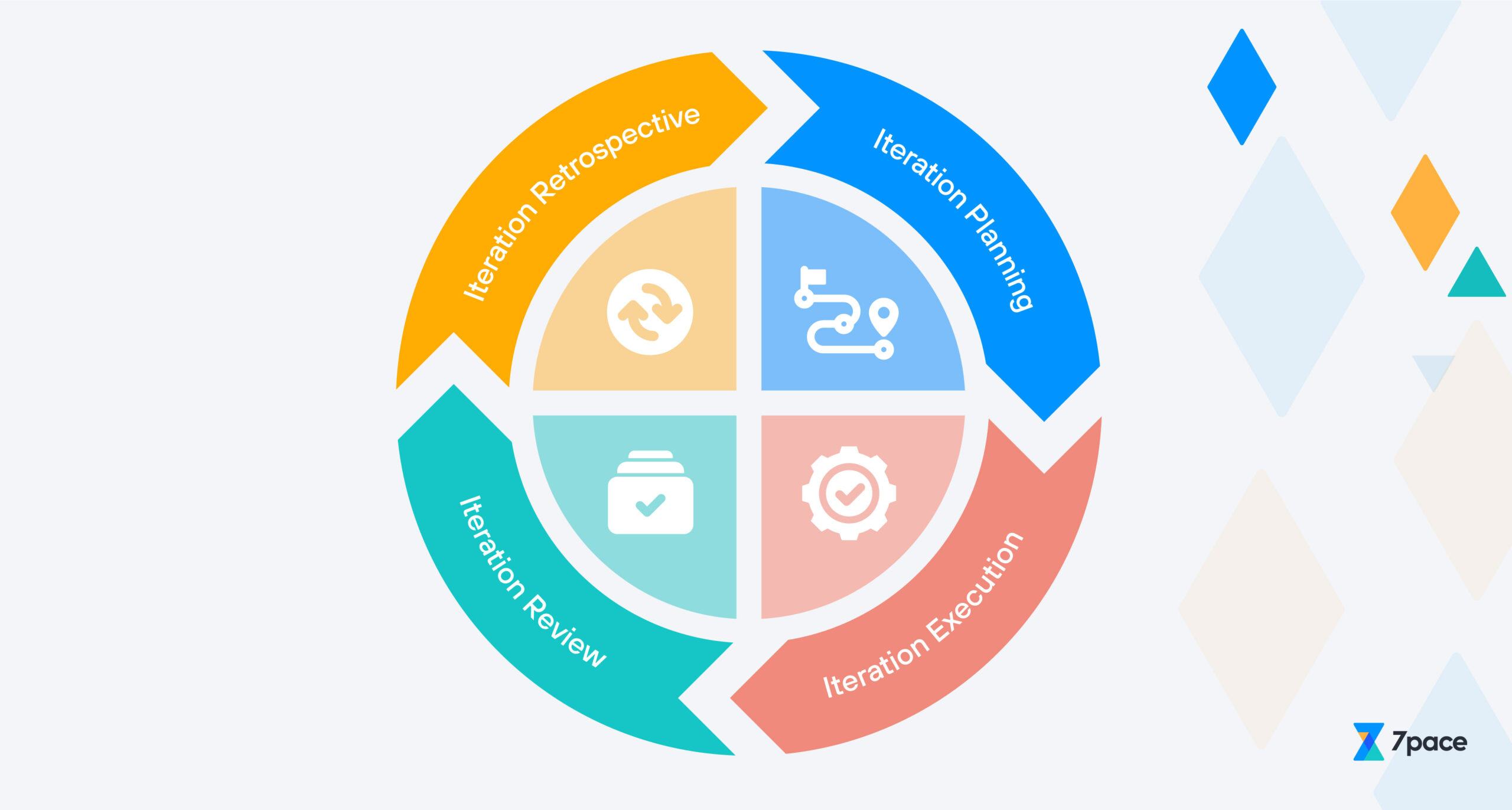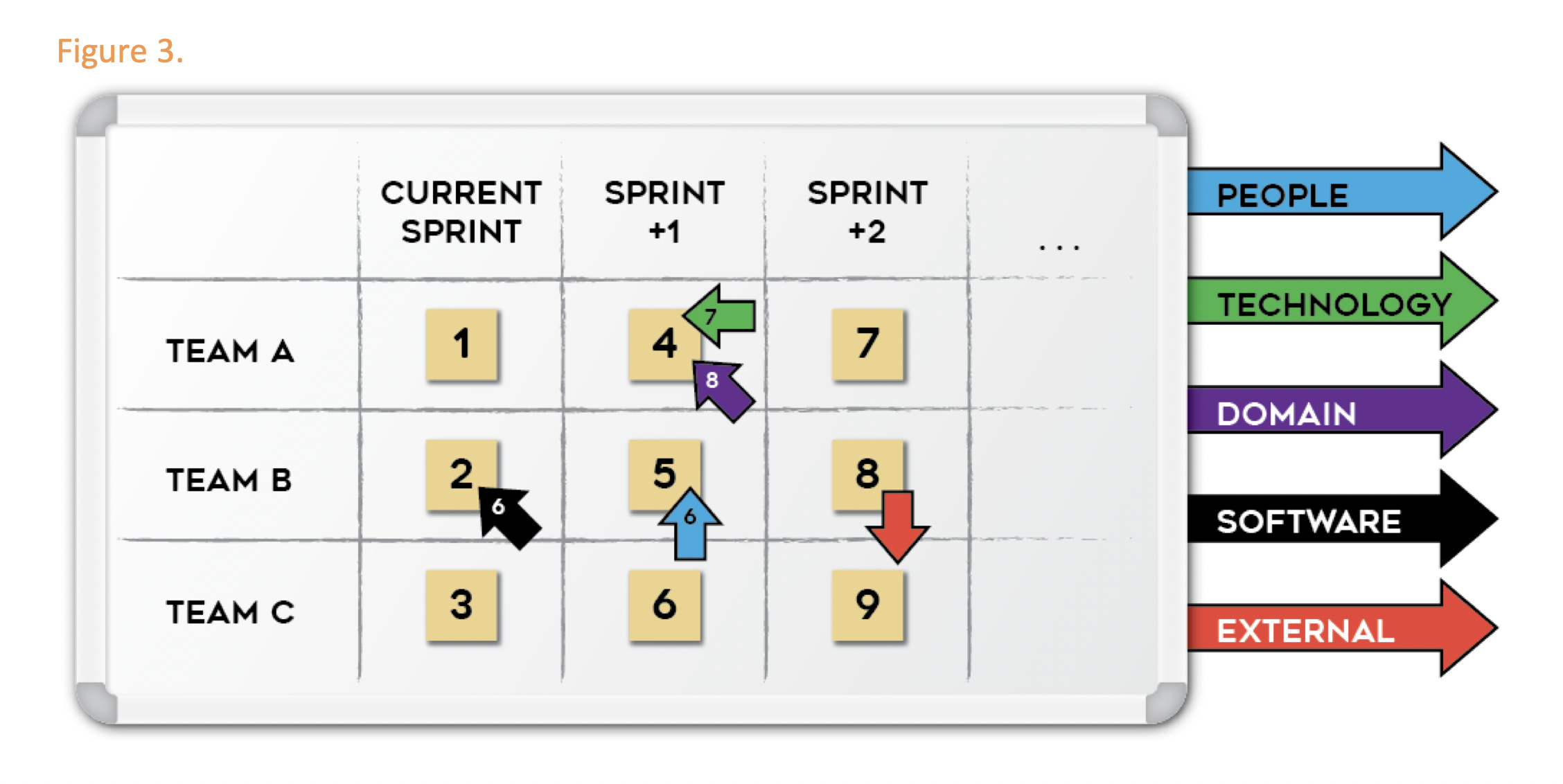Iteration Planning Facilitation: Maximizing Agile Iteration Planning
By Team Lean Agile Intelligence

Agile Iteration Planning: An Important Scrum Framework
Agile iteration planning is an essential aspect of the Scrum framework that helps teams deliver quality products within set timelines. It involves planning small product increments at a cadence to enable change.
For coaches facilitating iteration planning sessions, there are several improvements to focus on to ensure the process is effective. This blog post highlights foundational techniques and improvements coaches can adopt to maximize the benefits of agile iteration planning. Knowing the current state of your agile process will help determine the best techniques to choose. To gain a comprehensive understanding of your current coaching process status, we recommend taking advantage of our free agile assessment for Scrum Master.
Iteration Planning Facilitation and The Learning Journey
At Lean Agile Intelligence, we recognize Iteration Planning Facilitation as the ability to facilitate an iteration planning meeting and enable the team to plan small product increments on cadence to enable change, which is a crucial skill for Scrum Masters. We value this skill as it promotes effective communication, transparency, and collaboration among team members. We divided the learning journey into 4 different stages: Developing, Emerging, Adapting, and Optimizing. In the following sections, we will discuss each stage in detail as well as provide practical tips and techniques to help you extend your skills in this area.

Source - Iteration Planning for Modern Software Teams
Developing
A coach “developing” an understanding of the value of Iteration Planning Facilitation and adopting the foundational techniques should focus on the following improvements:
-
The What: Leads the facilitation of Iteration Planning and ensures it occurs on a cadence; at the beginning of every iteration (i.e., sprint)
-
The How: Iteration planning is the first event of a sprint. As an event, it must be on a scheduled cadence. A typical coaching recommendation is a starting point every two weeks for 2 hours (For a 2-week sprint). Being on a cadence means the meeting is happening at the same time at each interval. This way, team members and external attendees can adequately plan and consistently attend. According to the Scrum Guide, The timebox for Iteration Planning is no longer than four hours for a one-month Iteration.
-
-
The What: Collaborates with the Product Owner on potential iteration (i.e., sprint) goals and the readiness of backlog items to achieve it
-
The How: One of the fundamental aspects of coaching a scrum team is achieving common tangible product and team goals. Since scrum is an iterative process, we must set goals, achieve them, and then inspect and adapt based on feedback. A sprint goal states the purpose of a sprint while acting as a shared objective for the team to achieve. Roman Pichler has a great template that you can use to formulate sprint goals. You can utilize the entire template or whatever is appropriate for your context. It’s important to note that the goal is formulated throughout sprint planning and finalized by the end. It is not dictated from the beginning. It’s a good practice for Product Owners to have an idea of what the goal could be based on the prioritization and express that to the team at the beginning.
-
Emerging
A coach “emerging” beyond the foundational techniques of Iteration Planning Facilitation and embracing it as they become more proficient should focus on the following improvements:
-
The What: Proactively ensures all team members and necessary SMEs will participate in Iteration Planning to create a shared understanding of the work and have confidence in the plan
-
The How: Sometimes, SMEs outside the team may be required to assist in iteration planning. Ideally, they would be involved in the refinement process before iteration planning, but even then, they may be required to attend to answer questions. Ensure the SME is aware that their attendance is needed at least a week before the event and that they understand what their expectations of them are at the meeting.
-
-
The What: Facilitates discussions with dependent parties before Iteration Planning to ensure alignment, component integration, and quality assurance
-
The How: It's essential to plan any dependencies with other teams before iteration planning. This white paper from scrum.org details an excellent approach called "cross-team refinement."
-
-
The What: Coaches the team not to overcommit by leveraging past data
-
The How: Many teams use historical velocity for release planning; however, some teams eventually move to probabilistic forecasting. You can read more about that in-depth here. Agile coaches and Scrum Masters should have knowledge and expertise about both approaches and help craft a release plan using appropriate techniques based on available data and tooling.
-
-
The What: Makes Iteration Planning artifacts transparent to the rest of the organization
-
The How: All artifacts and metrics should be transparent and visualized via big visible information radiators or online tools. Artifacts and metrics are visible to contributors of iteration planning, and stakeholders should all have access to this information and review the information together at team events and meetings. For example, reviewing the dependency board, burn down chart, release goals, and other information at the scrum of scrums.
-
* * * * * *
"One of the fundamental aspects of coaching a scrum team is achieving common tangible product and team goals."
* * * * * *
Adapting
A coach that is “adapting” the Iteration Planning Facilitation to extract the full benefit should focus on the following improvements:
-
The What: Facilitates the creation of a Multi-Iteration plan (i.e., release plan, quarterly plan) that provides a look-ahead for multiple Iterations of work that calls out forecasted delivery dates, and dependencies
-
The How: We recommend release planning and planning with other teams to be done using a probabilistic approach. Using averages for forecasting and planning is not recommended.
Plans based on averages can fail on average because they do not account for the variability or uncertainty in the system being planned. Averages are useful summary statistics for describing the central tendency of a distribution, but they do not capture the full range of possible outcomes or the likelihood of extreme events.
To avoid this problem, planners need to account for the full range of possible outcomes and the uncertainty around those outcomes. This can be done by using probabilistic models that capture the variability and uncertainty in the system and by using scenario analysis to evaluate the impact of different assumptions and inputs. By considering a range of possible outcomes rather than relying solely on the average, planners can make more informed decisions and avoid the pitfalls of planning based on averages.
One technique probabilistic practitioners use in software development is a Monte-Carlo simulation for forecasting and planning. You can find more information about there here.
-
-
The What: Ensures the Multi-Iteration plan (i.e., release plan, quarterly plan) is used as an effective means of "connecting" the work being done by the team to the organization's short-term and long-term goals
-
The How: One of the fundamental aspects of coaching a scrum team is achieving common tangible product and team goals. Since scrum is an iterative process, we must set goals, achieve them, and then inspect and adapt based on feedback. A sprint goal states the purpose of a sprint while acting as a shared objective for the team to achieve. Roman Pichler has a great template that you can use to formulate sprint goals. You can utilize the entire template or whatever is appropriate for your context. It’s important to note that the goal is formulated throughout sprint planning and finalized by the end. It is not dictated from the beginning. It’s a good practice for Product Owners to have an idea of what the goal could be based on the prioritization and express that to the team at the beginning.
-

Source - Cross-Team Refinement in Nexus
Optimizing
A coach “optimizing” knowledge sharing of the Iteration Planning Facilitation practice learnings across the enterprise should focus on the following improvements:
-
The What: Teaches and shares advanced techniques to Facilitate Iteration Planning outside of those they directly support (i.e., Communities of Practice, Workshops, Mentoring)
-
The How: The practitioner has been relentlessly spreading best practices by coaching leadership on effective sprint planning and forecasting and has been demonstrably improved throughout the organization.
-
* * * * * *
"By considering a range of possible outcomes rather than relying solely on the average, planners can make more informed decisions and avoid the pitfalls of planning based on averages."
* * * * * *
Conclusion
In summary, agile iteration planning is an essential component of the Scrum framework that enables teams to produce high-quality products within specified timeframes. This process involves regularly planning small product increments to facilitate adaptability. To fully leverage the benefits of agile iteration planning, facilitators must prioritize foundational techniques and improvements. Scrum Masters must possess the skill of iteration planning facilitation to encourage effective communication, transparency, and collaboration among team members. To gain more insight into your current coaching process, take advantage of our free Scrum Master assessment.
